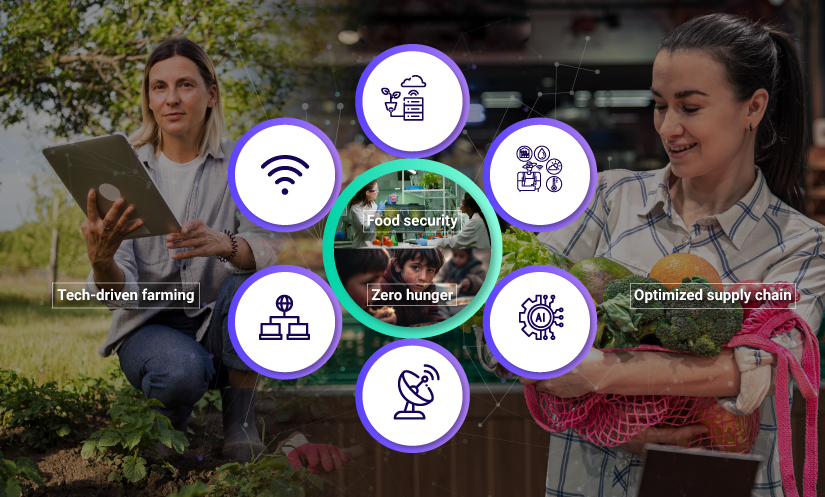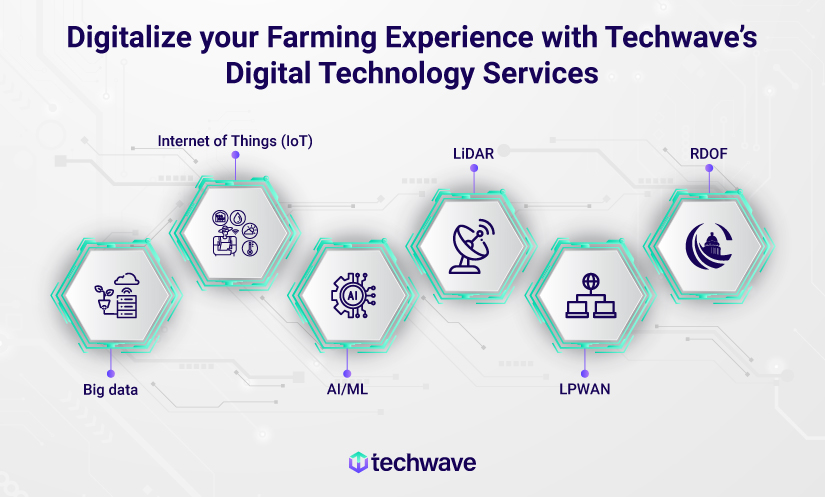Hunger has plagued humanity throughout its existence, remaining a fundamental necessity for individuals regardless of their access to clothing or shelter. From the dawn of time, humankind has worked hard – not to make money or chase a luxurious lifestyle, but to satisfy hunger. From foraging for food to inventing farming, a significant milestone in satisfying hunger, humans continuously sought new ways to sustain themselves and adapt to the technological era.
However, despite being well into the 21st century, where instant global communication and vast knowledge at our fingertips are possible through the Internet and smartphones, and even with the ability to explore distant planets through space probes, the persistence of world hunger remains a perplexing and significant issue.

Zero Hunger’s Significance in the UN’s Sustainable Development Agenda
While there are people skipping breakfast in a bid to save money (as per the Daily Post), they are yet lucky because there are scores of people who aren’t just skipping their breakfast!
World Food Programme (WFP) has established that more than 345 million people will face high levels of food insecurity in 2023, and the USDA states that there is a strong connection between hunger and chronic diseases like high blood pressure, heart disease, and diabetes.
Hunger dictates human behavior greatly; the more severe the hunger, the more profound the impact on physical and mental health, lowering the quality of life, individual productivity – personal, social and professional, weakening the economy, and leaving lesser scope for hope and growth. In short, gradually regressing to former times that humans bravely overcame with innovations, and entirely in conflict with the UN’s goal of progress for all.
This is the major reason behind the classification of Zero Hunger as only second to Poverty among the United Nations’ 17 Sustainable Development Goals (UN SDGs) to be achieved by 2030.
Digital Technology and Food Security: An Erstwhile Unlikely Pairing
There has been a significant rise in food prices. While the initial disruptions caused by the COVID-19 pandemic and the Ukrainian conflict have affected food supplies, it is crucial to acknowledge that other human activities (in addition to the above) led to climate change and caused such an astonishing rise in food crises.
We are in the age of the ‘Fourth Industrial Revolution’, and logically the best we have is our technological innovations. Why not combine the potential of digital transformation technologies with farming to design foolproof and high-yielding strategies to abate high costs, yield loss, and inconsistent food supply chains?
If the pace of tech adoption in farming operations has been convenient so far, the looming threat of climate change has accelerated this trajectory, prompting farmers to seek agile technological solutions to enhance their production capabilities. This has led to the emergence of smart farming and efficient agricultural practices, highlighting the crucial role of digital technology in agriculture. Ensuring global food security requires more than just boosting food production; it requires revolutionizing food production and distribution practices to foster sustainable growth and accessibility.
Why should companies get involved in addressing food crises worldwide?
Given that this is the ‘Techade’, companies have the resources and expertise to innovate and implement cutting-edge technology that can significantly help farmers and authorities address critical challenges such as:
- Supply chain hurdles
- Lack of real-time insights
- Need to dispense knowledge about new methods or strategies to maximize the farming ROI
- Better rural infrastructure
- Lack of access to weather/rainfall forecasts
- Climate change leading to a rise in natural disasters such as floods, tropical storms, extended drought periods, and the emergence of new pests and diseases
What is the role of technology in addressing food crises worldwide?
Companies have a shared responsibility to ensure that individuals facing hunger have access to the necessary nutrition. Fortunately, there are potential solutions available.
Technologies such as big data, LiDAR, AI/ML, and mobile technology can help in achieving predictive and real-time insights, rapid action, optimized food distribution, better infrastructure that facilitate access to accurate information so farmers can plan planting, harvesting, opting for the best fertilizers based on specific parameters, crop diversification, etc. These benefits help streamline farming operations, reduce yield loss, consequently reducing costs and driving accessibility and affordability.
The concept of precision farming has gained popularity in the past few years. It utilizes sensor data from weather stations, satellite imagery, and soil monitors to help farmers optimize their crops. This approach also allows for identifying vulnerabilities in the supply chain and enables efficient, scalable, sustainable, and climate-resilient yields. Precision agriculture is akin to data-driven decision-making in the business world, maximizing productivity while minimizing waste. In essence, it is a broader term spanning various individual technologies. Let’s see the role of various digital transformation technologies in improving farming.
- Internet of Things (IoT)
Large and local farms can utilize IoT to remotely monitor soil moisture, crop growth, and livestock feed levels. Farmers can optimize yield, minimize losses, and ensure sustainable practices by integrating operational data with predictive analytics.
Sensors serve as valuable on-the-ground tools by collecting data identifying specific crop threats, such as dehydration or disease in a particular area. This enables growers to apply targeted measures like crop protection, water, or nutrients only where needed. Farmers can combine sensors with other technologies to optimize their farming practices depending on their specific circumstances and requirements.
Low-Power Wide Area Networks (LPWANs) are particularly well-suited for collecting data on local agricultural conditions, including weather, soil moisture and composition, and environmental factors. These networks offer a more cost-effective solution, enabling wider per-acre coverage and increased asset monitoring. - Big data
Analytics and big data help farmers detect crop pests and diseases early, reducing potential damage. It also provides insights to reduce food waste by managing inventory and making informed purchasing decisions.
IoT and big data enable adjustments to mitigate yield losses, price fluctuations, and farming costs. Additionally, it enhances food distribution effectiveness by predicting shortages and facilitating appropriate response plans. This includes designing a supply chain from areas of surplus food to areas with insufficient supplies.
A real-world example is the International Centre for Tropical Agriculture (CIAT), which supports smallholder farmers by promoting agricultural technologies and innovations. Collaborating with the Colombian Ministry of Agriculture and the National Federation of Rice Growers, CIAT collected extensive weather and crop data over the past decade. This data helped predict climate changes in Córdoba, a major rice-growing area in Colombia. By sowing crops at the right time, based on the analysis, 170 farmers in Córdoba avoided estimated economic losses of $3.6 million and potentially increased rice productivity by one to three tonnes per hectare. - Artificial Intelligence(AI) and Machine Learning (ML)
AI, ML, and IoT sensors provide real-time data that significantly enhance agricultural efficiencies, improve crop yields, and reduce production costs. Here are some key applications:
Yield mapping utilizes supervised machine learning algorithms to analyze large-scale data sets, enabling real-time identification of patterns. This information is invaluable for crop planning and optimization.
With a shortage of agricultural workers, AI and ML-based technologies like smart tractors, agribots, and robotics offer viable solutions for remote farm operations struggling to find labor.
AI plays a crucial role in the early stages of the agricultural lifecycle by enhancing the development of superior crop inputs, such as gene editing technology.
AI is employed to combat challenges posed by drought and weeds. Researchers utilize AI to discover safer and more effective crop protection methods, particularly against troublesome weeds like Palmer Amaranth, which is resistant to common herbicides.
With the worsening effects of climate change, AI models equipped with real-time data assist growers in making precise decisions regarding crop treatment, adapting to changing conditions, and maximizing productivity. - 3D Printing
This technology can tackle inefficiencies in the food market by reducing food spoilage and enabling personalized food choices. It has practical applications for cost reduction and labor efficiency.
Here’s a use case – in the current supply chain, fruits undergo a lengthy journey, consuming significant energy to keep them fresh. Unfortunately, around 31.5% of fruits and vegetables are lost before reaching consumers’ tables.
To revolutionize the supply chain, fruits can be immediately converted into powdered micronutrients after harvest. This enables easy transportation without the risk of decomposition associated with fully hydrated fruits.
Using a 3D printer, consumers can effortlessly reassemble the powdered fruits into their original, delicious form. This process minimizes energy usage and waste generation.
This innovative approach improves sustainability, preserves food quality, and reduces the amount of produce wasted, ensuring more fruits and vegetables reach consumers’ plates. - LiDAR
LiDAR technology offers significant agricultural potential by enhancing crop yields and improving land efficiency. For example, 3D LiDAR maps enable the identification of trees within an orchard and provide insights into the water flow direction at the base of each tree. Additionally, it assists in accurately determining the farm’s terrain, identifying water catchment areas, and understanding erosion patterns.
Techwave’s Cutting-edge Technologies for Agriculture

Techwave prioritizes ‘zero hunger’ and is committed to the UN Sustainable Development Goal. Techwave has expertise in various technologies that can solve the problem of food scarcity. We offer LPWAN, Big Data, AI/ML, IoT, LiDAR, and other technologies to address this issue.
Above all, we understand the critical need to ensure access to information for farmers and agriculturists to drive data-driven decisions. In line with this, we offer rural broadband infrastructure and services so farmers can seamlessly implement the above-mentioned technologies. Directly or indirectly, technology must pave the way to address hunger and make food accessible to each world citizen – physically and financially.
To know more about how big data can contribute to agriculture, read our blog LEVERAGING BIGDATA IN AGRICULTURE.
